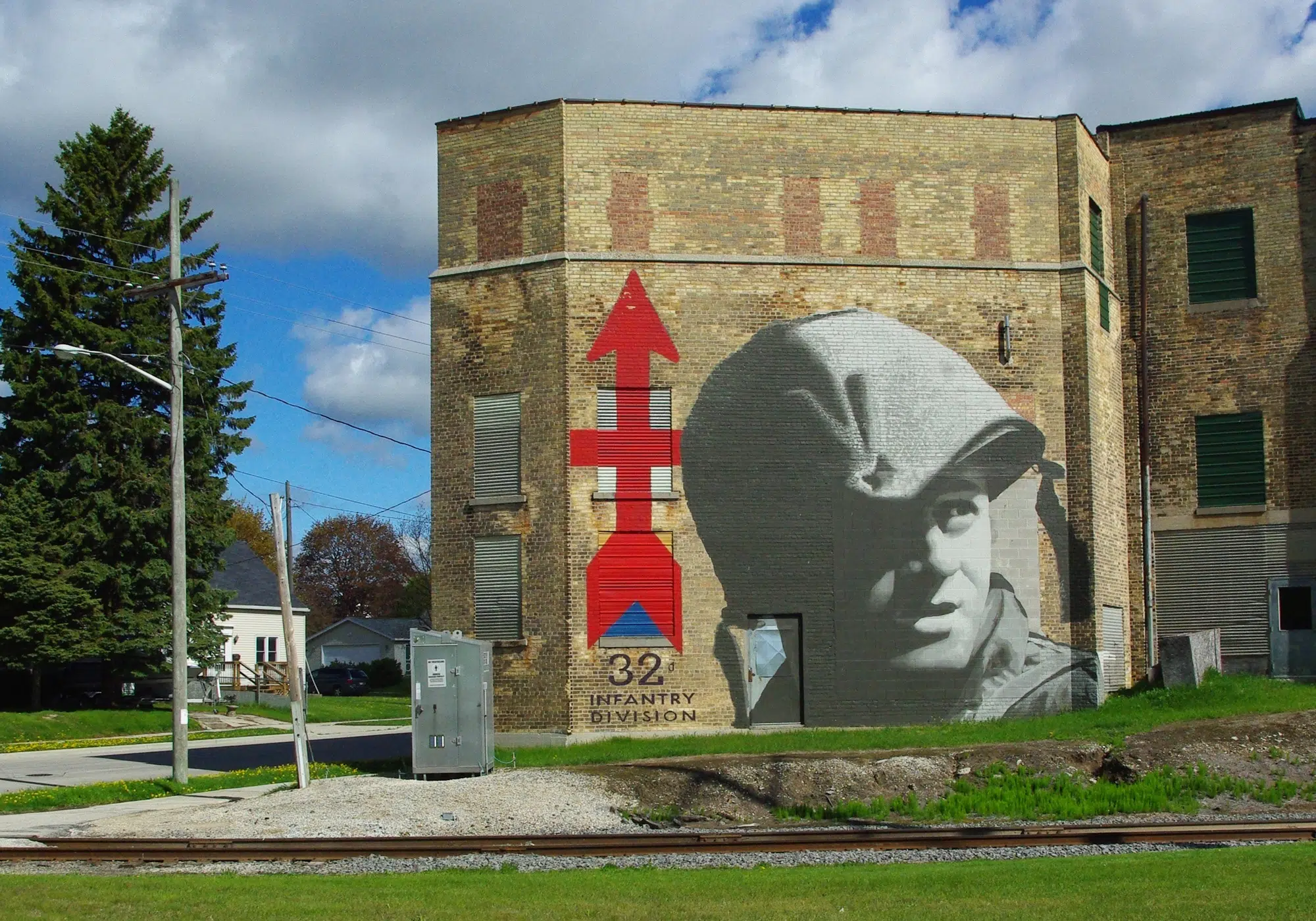
The following article was written by National Guard Staff Sargent Alice Ripberger.
Two women in the small French village of Juvigny paused to talk to a group of Americans looking at battle maps and excitedly taking photos of an empty gravel road and lush spring wheat fields.
A translator explained that for the first time since 1918, a delegation of Wisconsin National Guard Soldiers had traveled to northern France to retrace the footsteps of Wisconsin Soldiers from World War 1 — visiting battlefields, monuments, American military cemeteries and memorials during a professional development staff ride hosted by National Guard Bureau’s Leadership Development Program held April 24-30.
“A staff ride is an Army professional development event where today’s Soldiers can study timeless principles of military doctrine on an actual battlefield site, with the combined goals of learning from the past and understanding the history and heritage of those Soldiers who preceded you,” said Maj. Brian Faltinson, the event’s project officer and historian.
Fifteen Soldiers who had earned accolades for their leadership, community service and exceptional support to the state’s COVID-19 effort were selected to attend. The group specifically focused on World War I battles involving the 32nd “Red Arrow” Division, which was formed in 1917 with 15,000 Wisconsin National Guard Soldiers along with 8,000 more from Michigan.
The 32nd Division earned its distinctive Red Arrow insignia when it was the first American division to pierce Germany’s vaunted Hindenburg Line during the Meuse-Argonne offensive in October 1918. Soldiers in the 32nd Infantry Brigade Combat Team continue to wear this insignia.
“It was crazy to see the Red Arrow insignia commemorated in this country,” said Sgt. Kyle Kenowski, a cyber security specialist with the Wisconsin National Guard’s Joint Force Headquarters who previously served in the 32nd Infantry Brigade Combat Team. “We saw the Red Arrow inscribed in their monuments and even on a plaque on the side of the street. The people here remember the Red Arrow.”
“It really shows the international influence of our organization and of the people in our Wisconsin communities,” added Lt. Col. Matthew McDonald, commander of the 32nd Infantry Brigade Combat Team’s 1st Squadron, 105th Cavalry. “The Wisconsin National Guard has supported U.S. Army efforts around the world for over 100 years, and it all began right here in these fields in France.”
Sgt. 1st Class Aaron Heft, combat field studies supervisor for the National Guard Bureau’s Leader Development Program, reflected on the many units he has accompanied on staff rides.
“Wisconsin is fortunate because it retains so much of its history within its current units, much more than units from many other states,” Heft said. “It’s been a long process through COVID delays to get Wisconsin here to do this staff ride, and to see these troops learning their history has been fantastic.”
The Red Arrow’s hard-won legacy from 100 years ago remains to this day and is carried on by the Wisconsin Army National Guard’s 32nd Infantry Brigade Combat Team, 157th Maneuver Enhancement Brigade and elements of the 64th Troop Command Brigade.
“The group learned about the creation of the 32nd Division in 1917 from 72 Wisconsin communities, as well as the distinguished actions of Wisconsin’s Soldiers at the Second Battle of the Marne, Battle of Juvigny and the Meuse-Argonne Offensive,” Faltinson said. “The division had vital roles in each and was considered among the best American divisions of the war.”
The group also paid their respects at the Oise-Aisne and Meuse-Argonne American Battlefield Monuments and Cemeteries where hundreds of Red Arrow Soldiers rest eternal.
“You read about the number of Soldiers lost in [World War I] and see the number on the page but it is completely different to see each grave laid out in front of you,” said Lt. Col. Matthew Elder, a prior commander of the Red Arrow’s 2nd Battalion, 127th Infantry.
This staff ride represented an opportunity for many Soldiers to follow not just the lineage of Wisconsin units and commemorate those who came before them, but also the history behind their own military training.
Warrant Officer Candidate Isaiah Ervin, a food service specialist in the 32nd Infantry Brigade Combat Team, gestured to a restored kitchen wagon at a museum that was once used to bring hot meals to American troops during World War I. He led a discussion with the group about its modern equivalent and how the Army currently conducts field food service operations.
“Standing here in front of this and seeing it helps me understand the evolution of the military’s food systems and technology,” Ervin said. “In many ways there are more similarities 100 years ago than there are differences today.”
Chief Warrant Officer 2 Aaron Grudich, an aviation maintenance technician with Madison’s 147th Aviation Battalion, worked as a senior instructor to warrant officer candidates and values the first-hand experiences he will have a chance to bring back to students as a guest instructor.
“Walking around the battlefield first-hand, I can appreciate the command decisions and the far-reaching impact it can have on thousands of lives,” Grudich said. “The difference, scope of impact of an officer, illustrate to students how big it is, when you’re here you can appreciate the command decisions and the far-reaching impact it can have, thousands of lives, it is truly humbling.”











